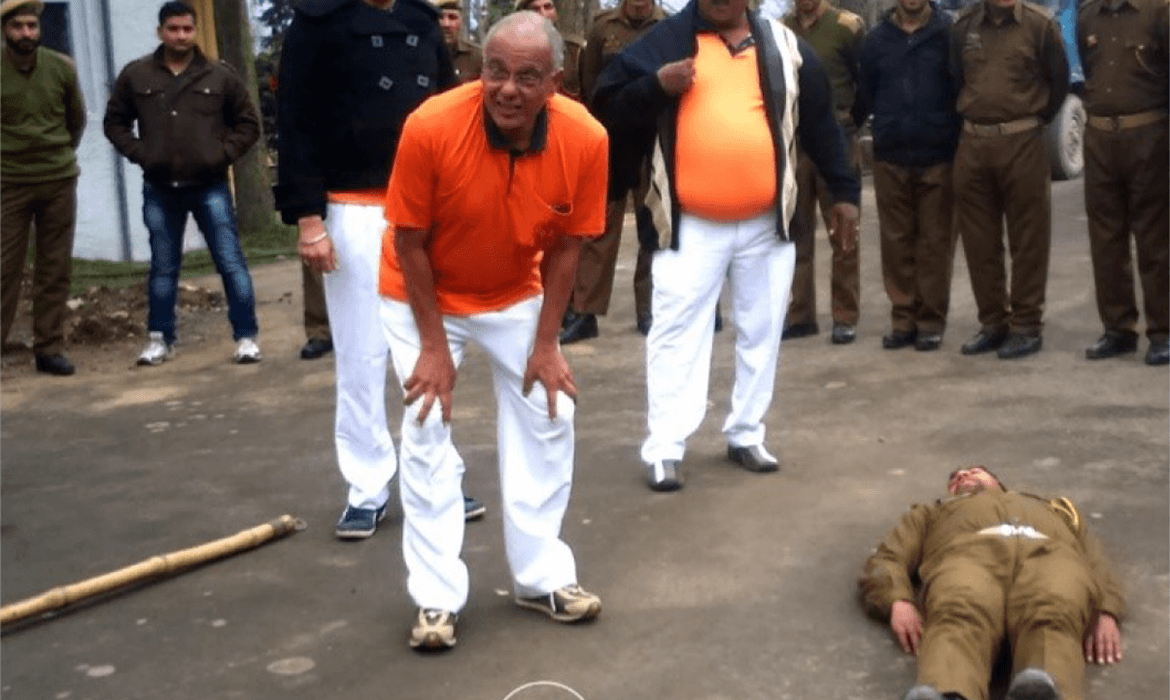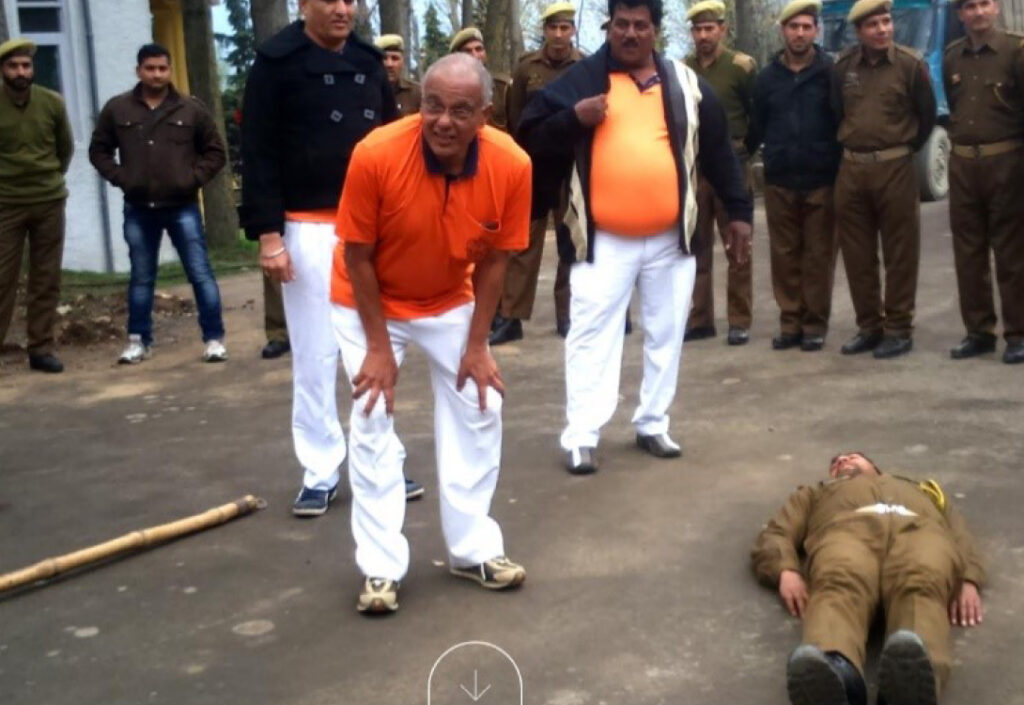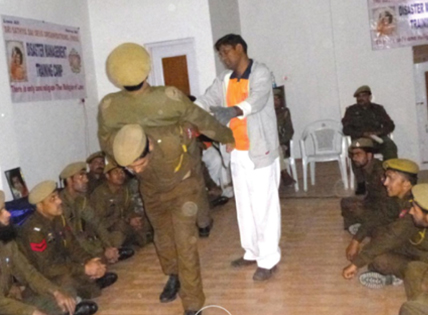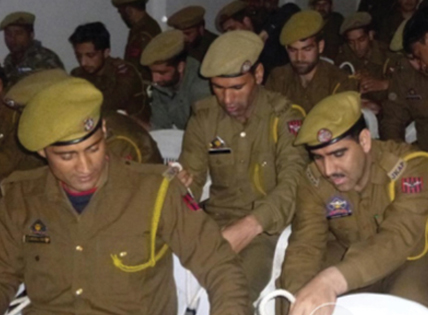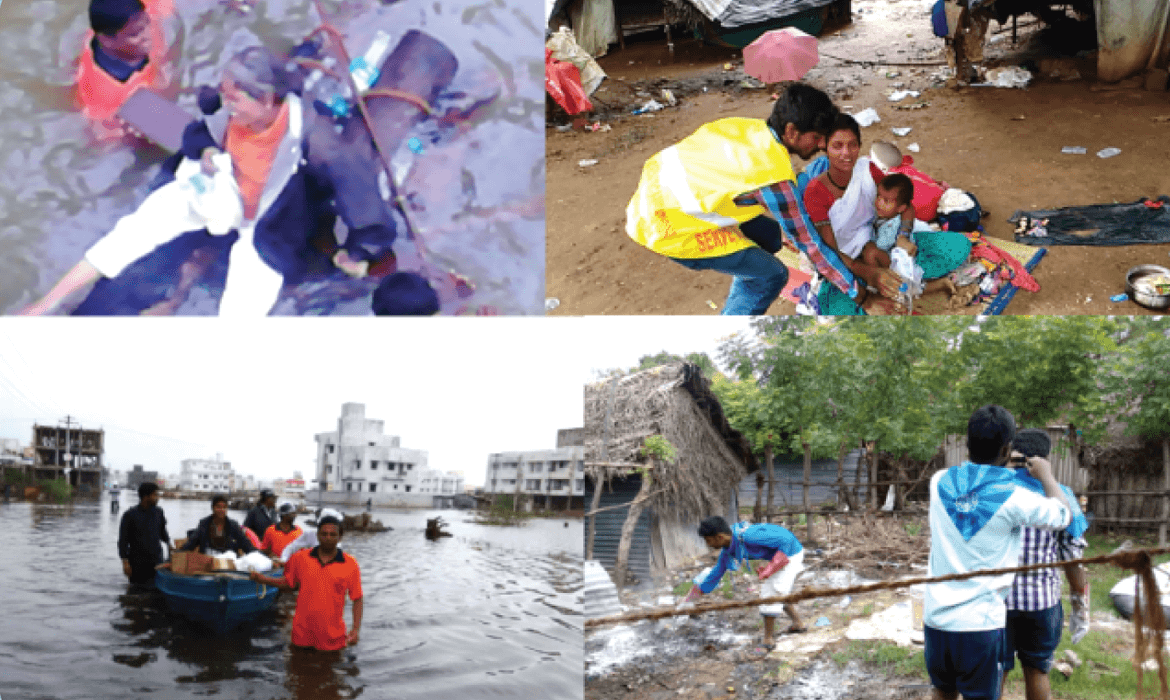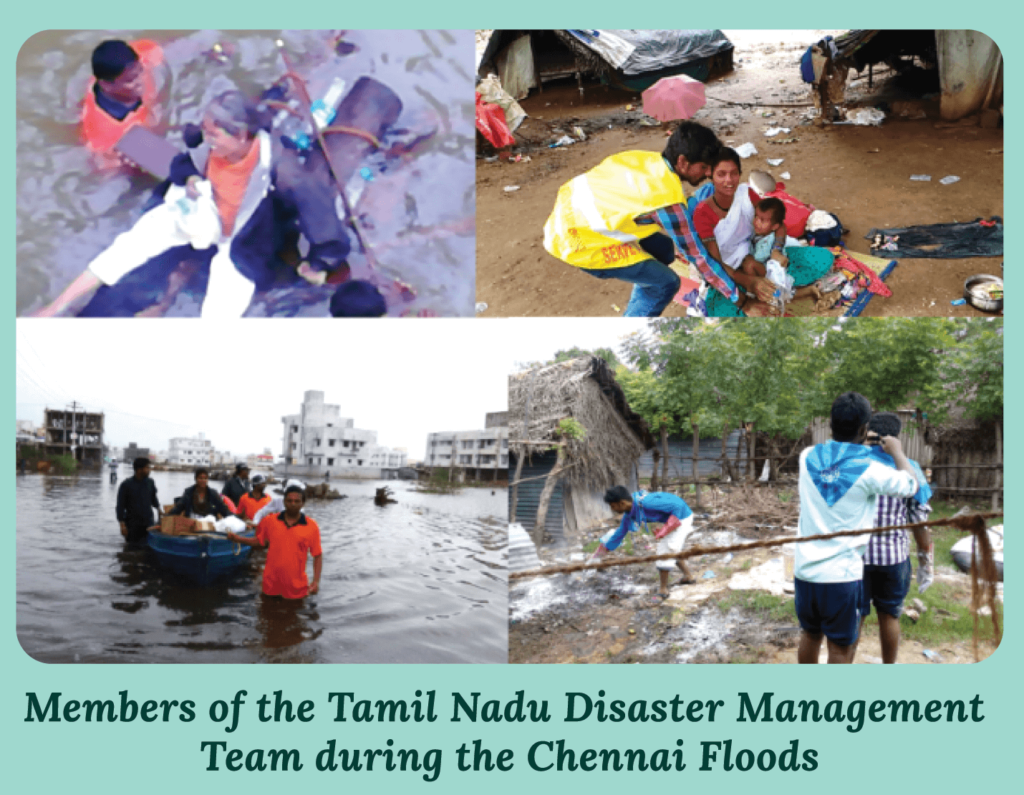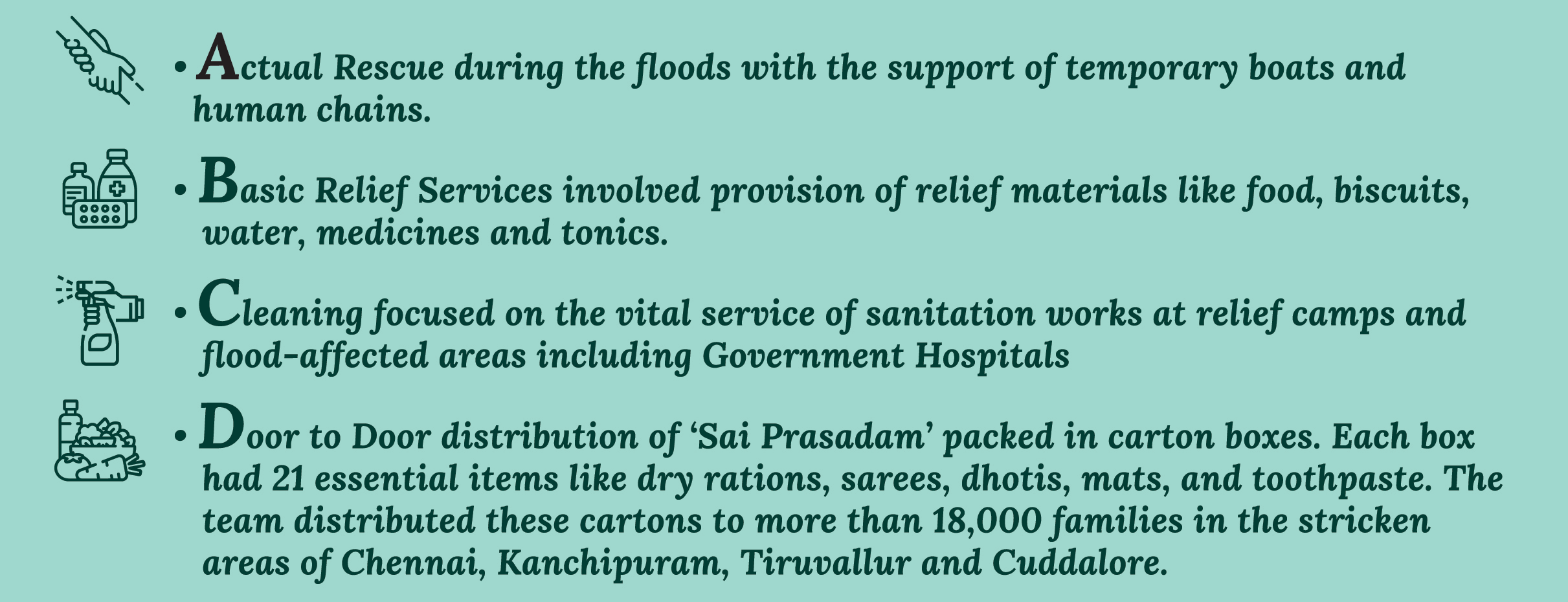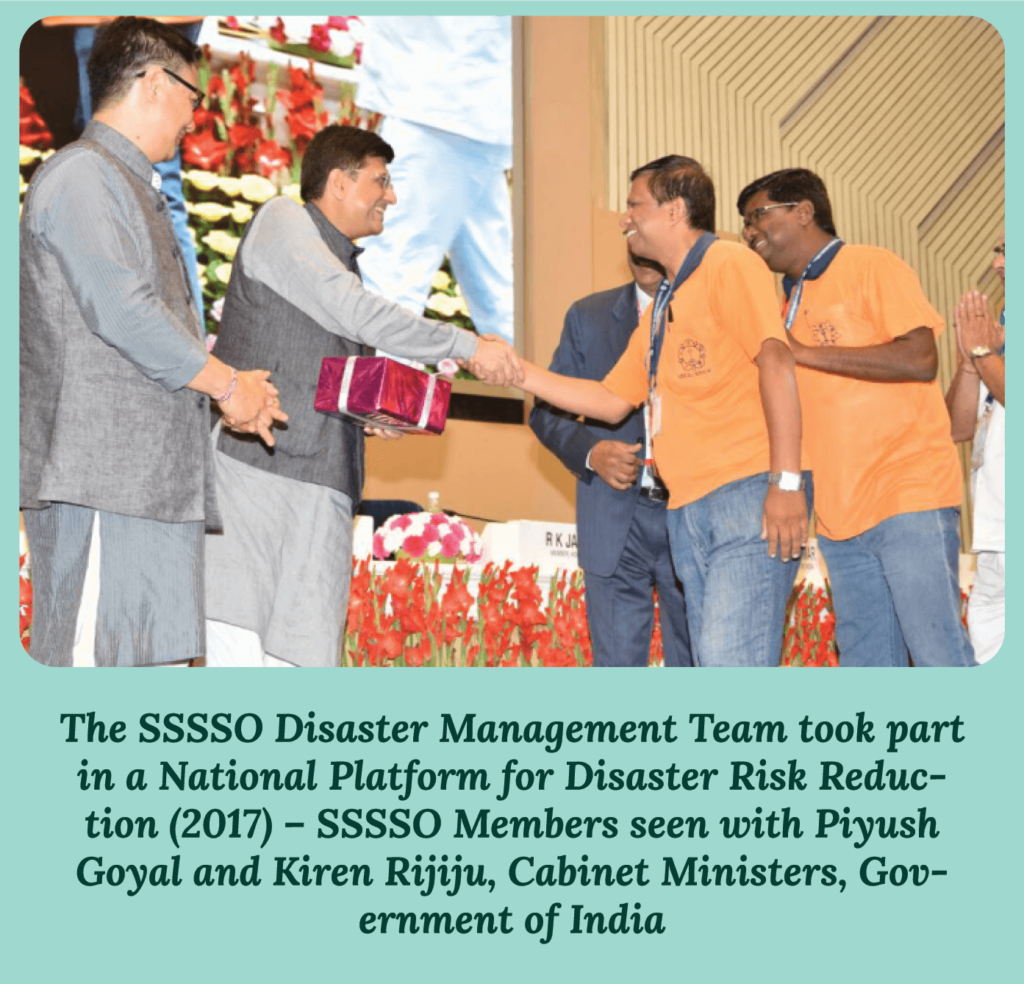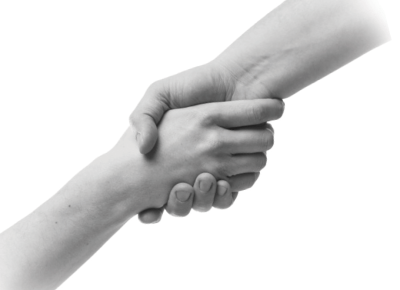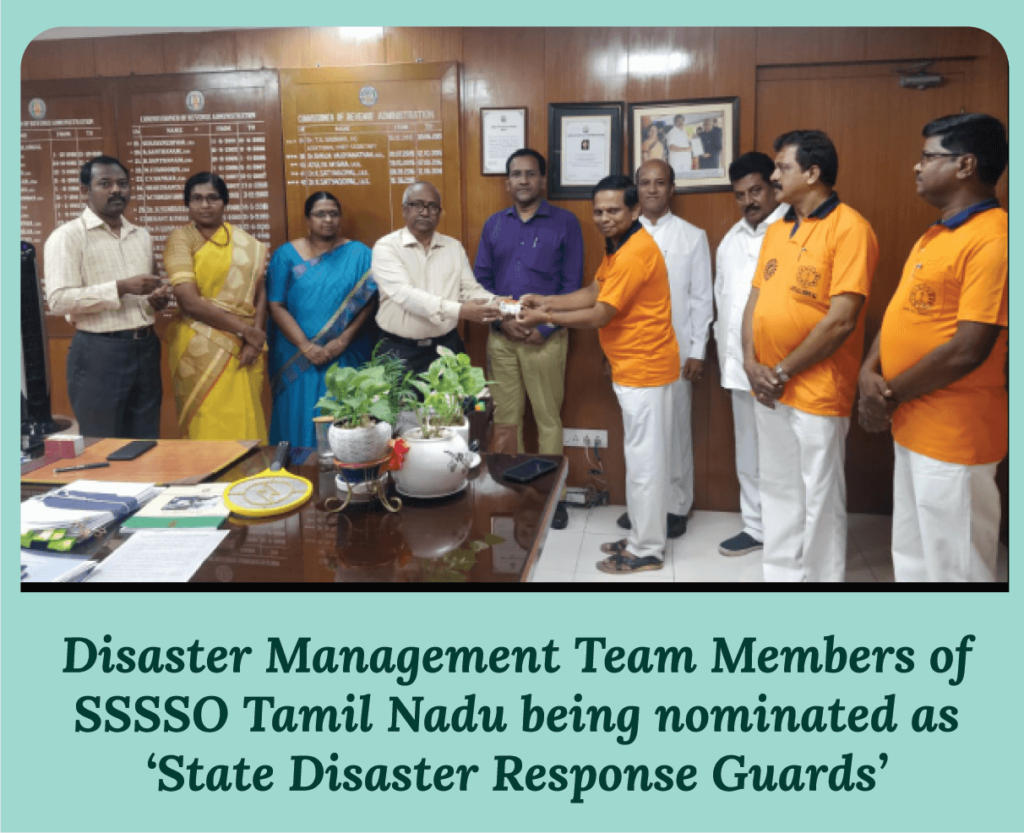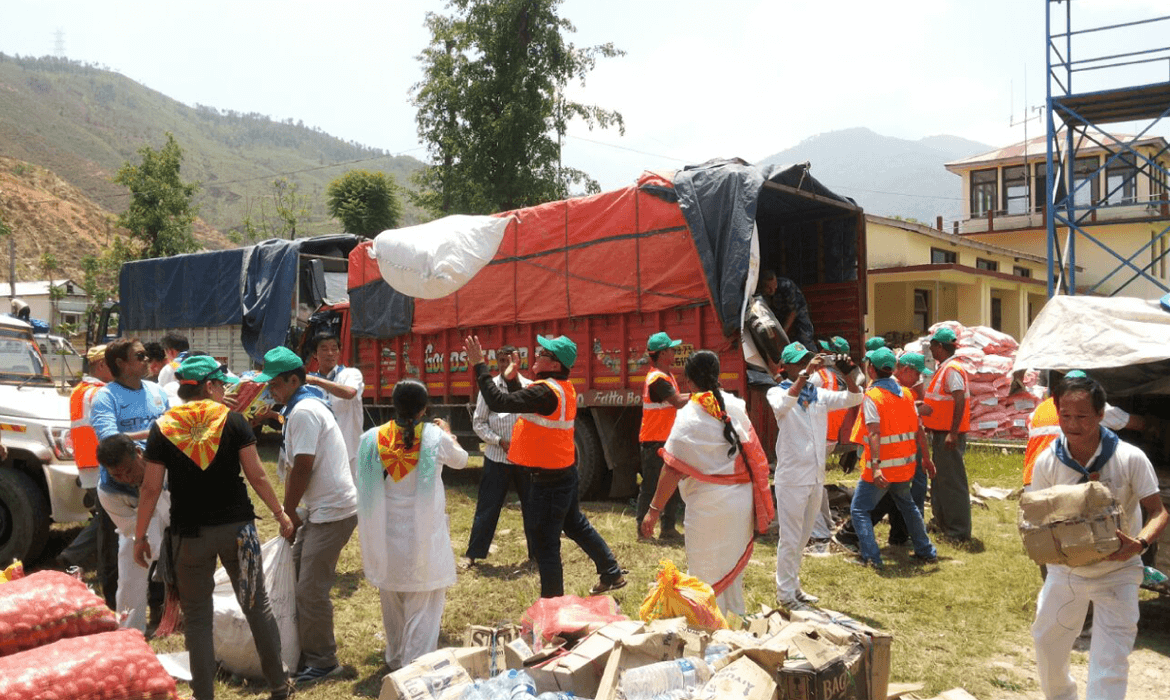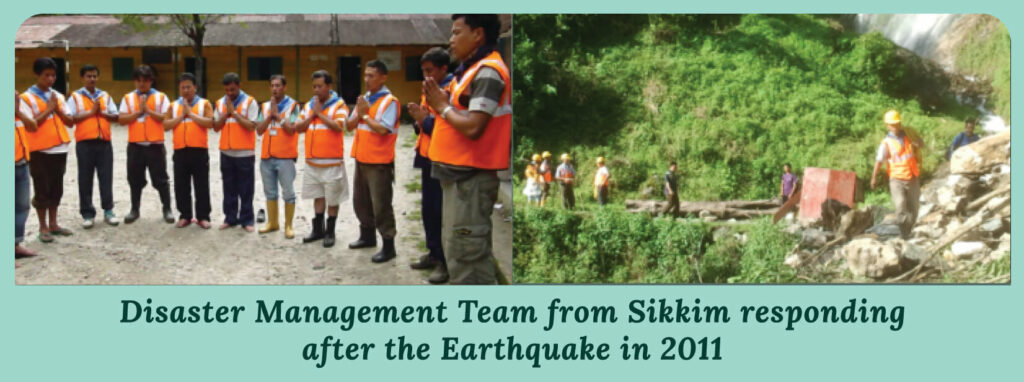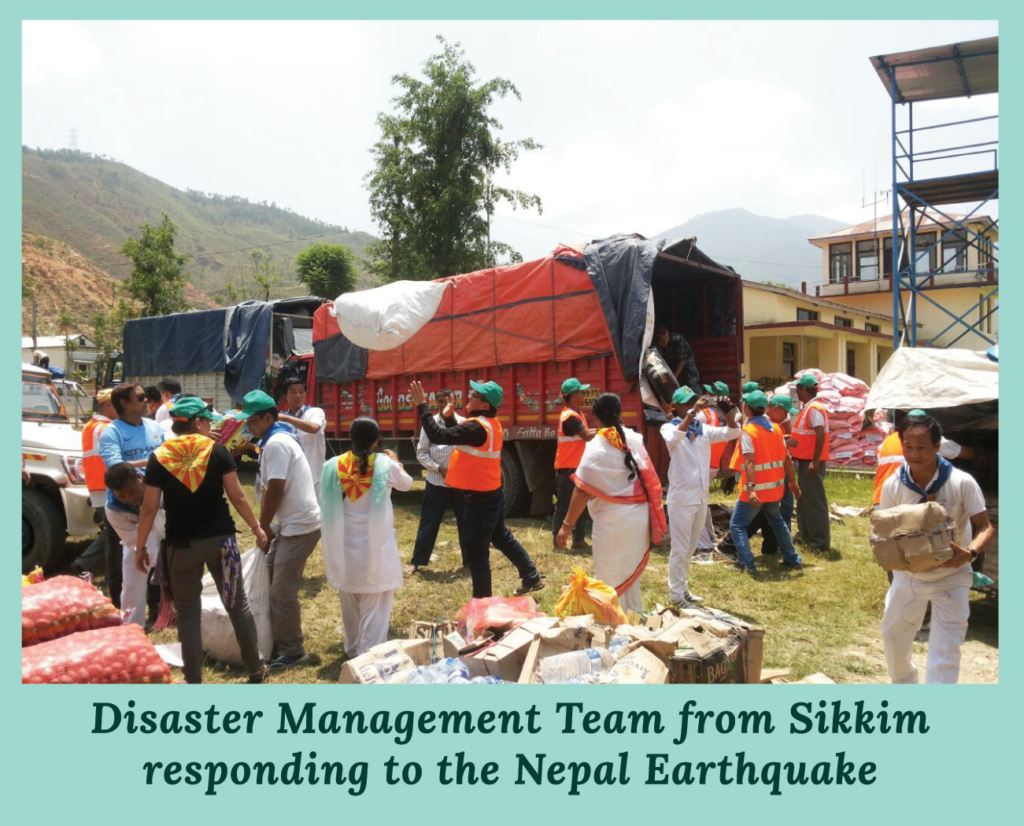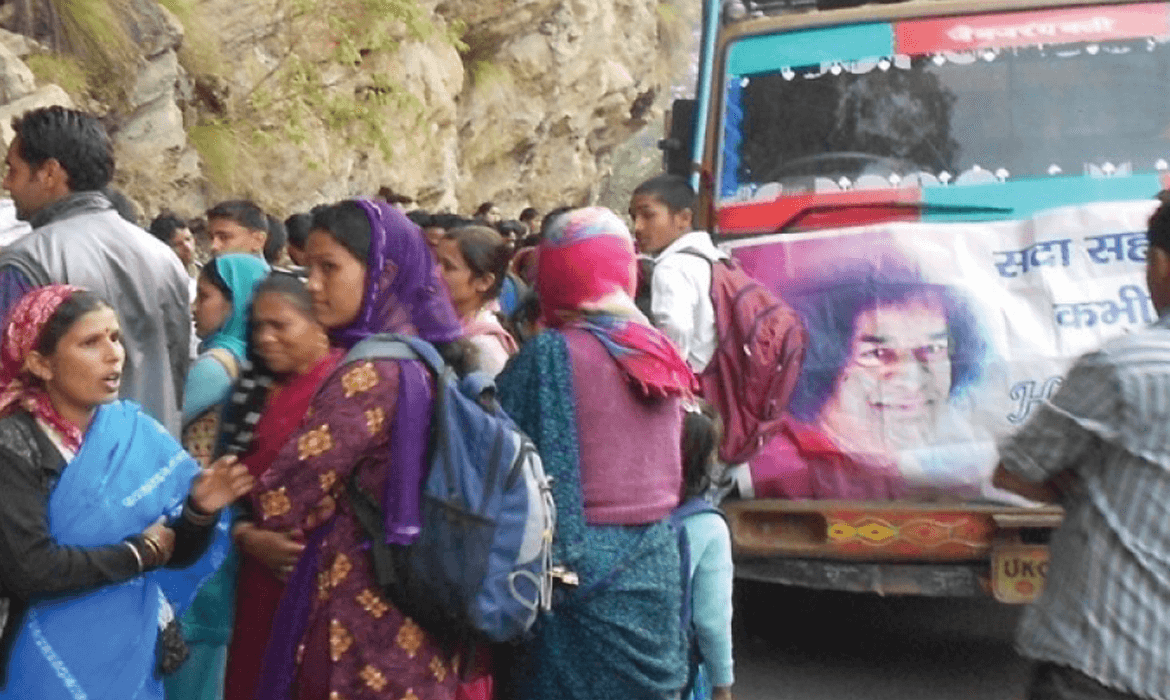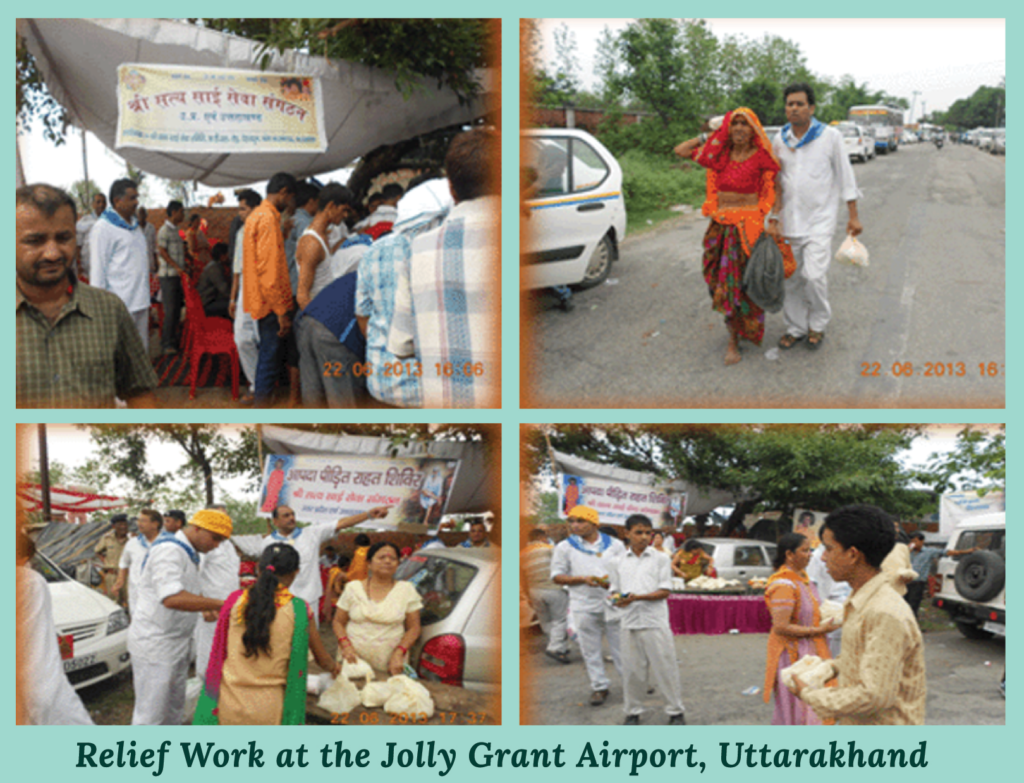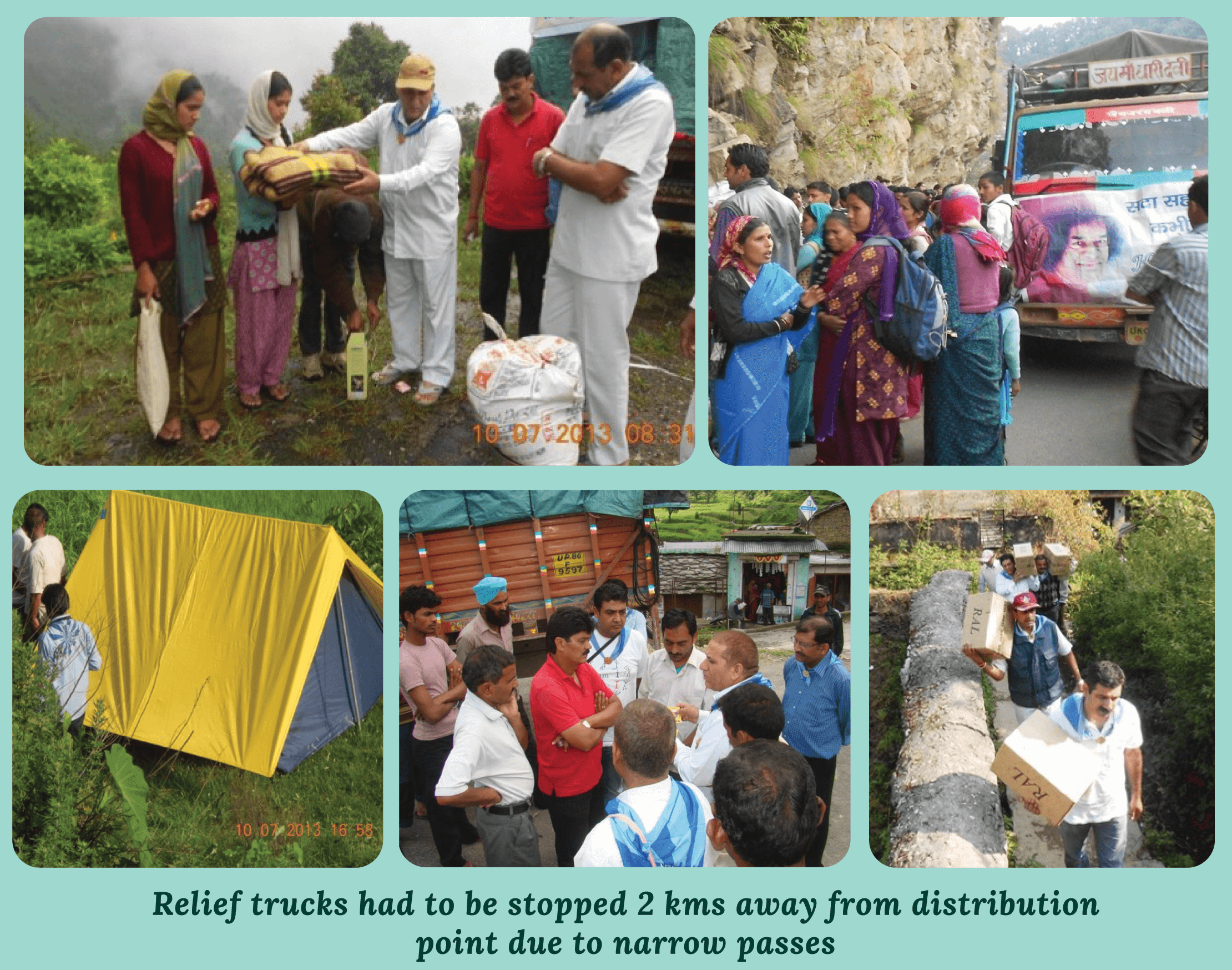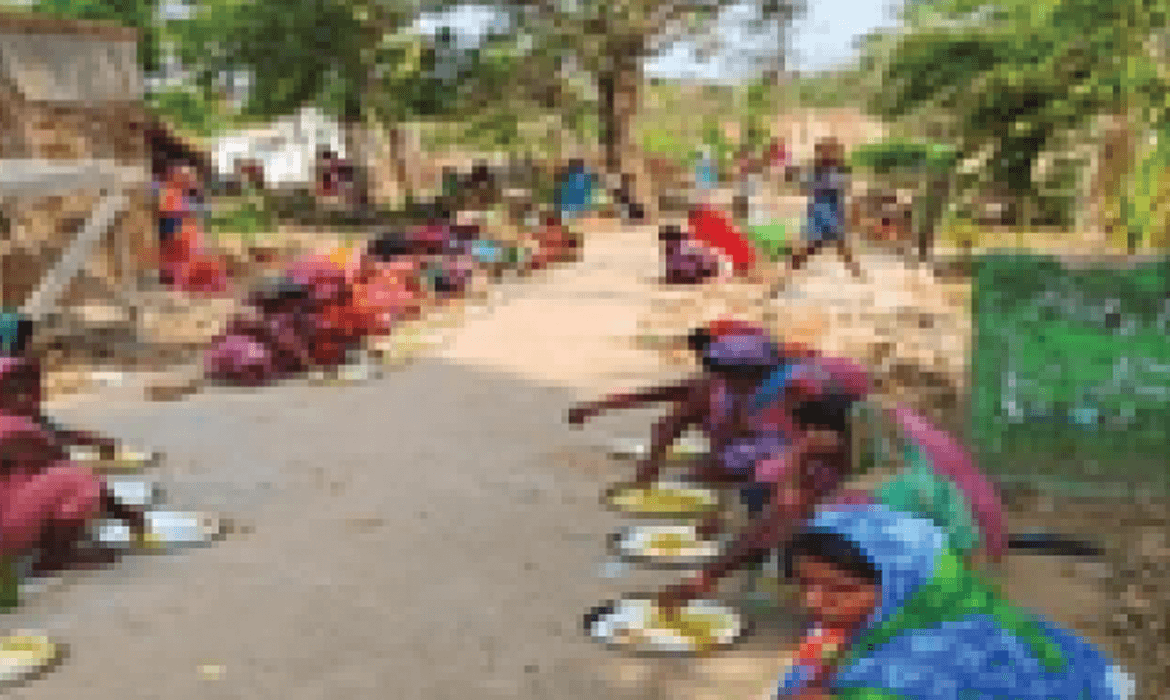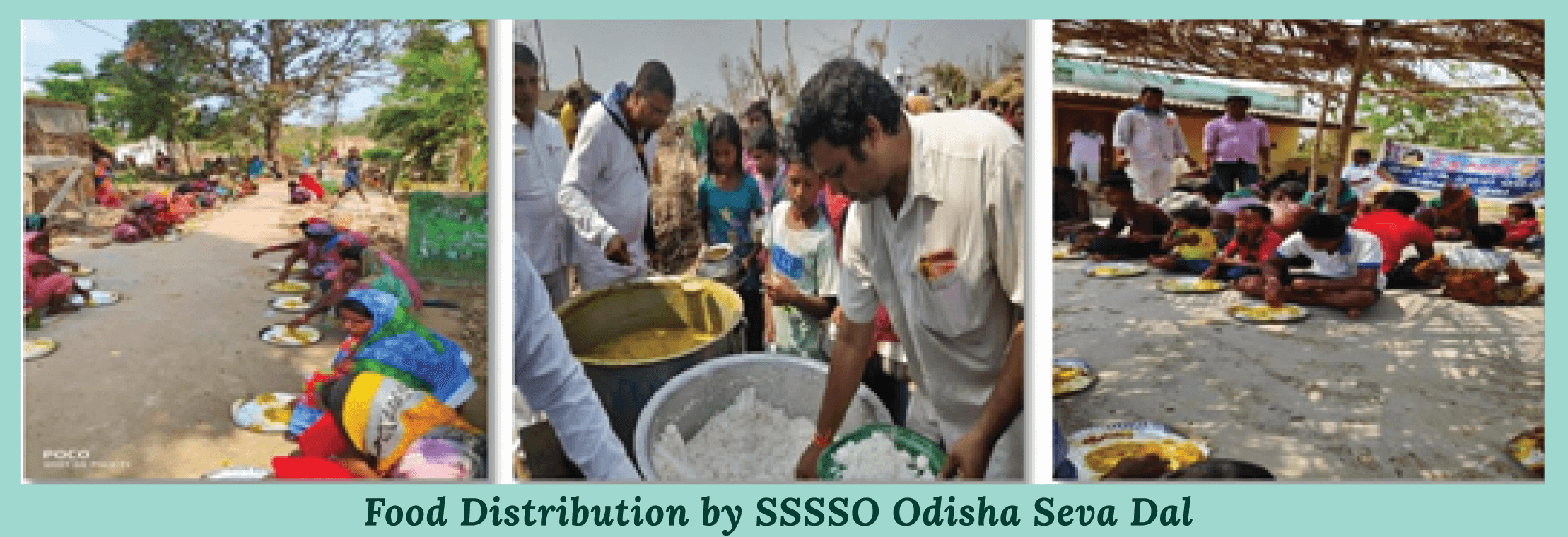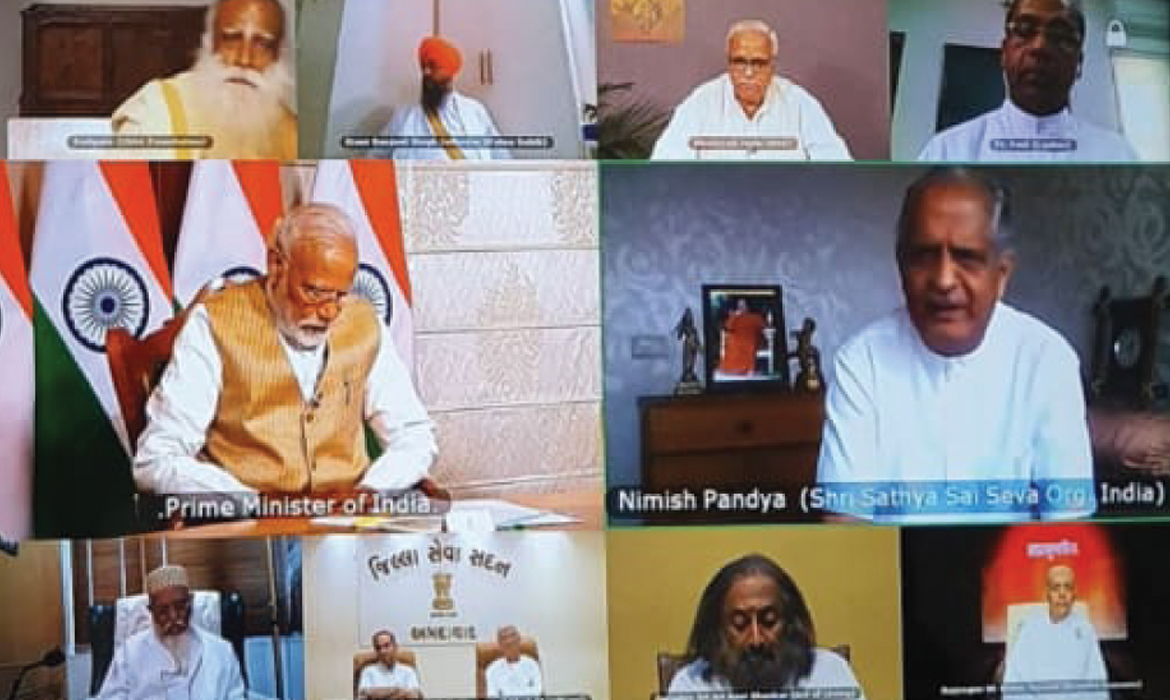Category: DISASTER MANAGEMENT
Feeding the masses during COVID-19 Lockdown
Although hydrological and meteorological events are more frequent, occasionally other unforeseen
events require a rapid response to impending disaster and suffering. COVID-19 and the
ensuing lockdown in March 2020 resulted in a massive humanitarian crisis in the country. Hundreds
of thousands of migrant workers left the cities where they toiled, often walking several
hundred kilometres to reach their homes. Many more who stayed were left without livelihoods,
incomes, and even basic necessities to survive in the cities. The crises were sudden, as they often
are, and care providers like SSSSO had to swing into action almost immediately to alleviate the
suffering of the masses.
In every state across India that required assistance, the state units of SSSSO provided basic
necessities like food, water, dry ration/groceries, quick eats like biscuits and fruits, footwear,
masks, sanitizers and medicines. Massive community kitchens were set up in several states to
serve fresh cooked food to the poor, wage workers, stranded citizens, and migrant workers passing
through on their way home. Pandemic-specific items like face masks, PPE kits, face shields,
soaps and sanitizers were provided in many of states. The mobilization of volunteers, materials
and resources was on an enormous scale, as required to meet the needs of large swathes of population
in distress due to the pandemic and the crisis in their living situations.

Key features of the Covid Seva were distribution of food packets and/or cooked meals to individuals,
as well as provisions to households through distribution of Amrutha Kalasham (dry ration kits
comprising of materials required for preparation of full meals at home).



A critically important service was the provision of food packets and hot meals through massive
community kitchens to migrant workers, and others in cities and towns that were in deep distress
due to the lockdown induced loss of livelihoods, wages, food, and shelter. The immediacy of the
need demanded that Sai Samitis swing into action and provide food to the needy in railway and
bus stations, city and town centres, roads and highways where migrants were walking home.
Nearly 20 lakh citizens were served food over the weeks following the lockdown in March
2020. Hygiene products and footwear were other essential items provided in many states.
Seua Dals in Action – Hallmark of Selfless and Silent Service
The need for quick mobilization and action to serve the distressed in the wake of COVID-1 9
demonstrated the pan-India level grassroots bench strength of volunteers built over decades by
sssso.While the actual number of volunteers deployed is unknown, it is safe to say that lakhs of volunteers
worked across India with the hallmark ‘Love All, Serve All’ motto of the Organisation and the characteristic
silent Seva that SSSSO promotes. The number of persons served, and costs associated
may give a glimpse into the magnitude of operations; but the real value of the service is in the
countless hours of selfless service rendered by the silent Seva Dal volunteers across the country.
They served at railway stations and bus stops, highways, hospitals, and quarantine centres in the
urban areas and remote rural villages to ensure that no one went hungry during the lockdown. All
this happened in the middle of a pandemic, with considerable concerns of personal safety. Their
yeoman service during these testing times was acknowledged by many, including the media and
officials in various state governments.

A testimony to the efforts of both SSSSO and Sri Sathya Sai Central Trust in alleviating the suffering
of fellow citizens during the pandemic was the invitation by Sri Narendra Modi, Prime Minister of
India, to both organisations to join him for a discussion on disaster rescue and relief measures,
along with several leading spiritual organisations. SSSSO was represented by Sri Nimish Pandya, All
India President. The Central Trust was represented by Sri R.J. Ratnakar, Managing Trustee.

Way Forward
After two decades of capacity building, rescue, and relief operations in the aftermath of major and
minor disasters in India, the Disaster Management Initiative under SSSSO is poised to scale up its
Disaster Preparedness activities in the next few years.As of 2019, the DM Team has trained 47,142 Seva Dais, nearly a fifth ofthe total strength eligible
for training. Some of these were re-trainings/upskilling of existing volunteers. The plan is to train
all Seva Dais on the state rosters by 2022. In addition, re-training of district level teams is planned,
to ensure that volunteers are ever ready for deployment in the event of an emergency. Reviewing
and upgrading DM equipment at the state and district levels is also on the cards.Disaster preparedness training will also be imparted at Sri Sathya Sai Vidya Jyothi schools across
India. This will include training on first aid for teachers and senior students, visual displays on techniques
of saving lives in an emergency, health and hygiene practices, sanitation (including clean
school premises and toilets), and availability of a first aid box at each school.Since response to disasters is occasional, trained Seva Dais will also be required to work regularly
towards enhanced resilience in villages and communities. Weekly Grama Seva in the allotted
villages will comprise of:

The focus in the years leading up to the centennial birthday celebrations of Sri Sathya Sai Baba will
be on training youth members at every Samiti. The National Initiative on Disaster Management
aims to make every member of SSSSO capable of and committed to the task of being a first
responder in his/her home, locality, workplace, society, and community, thus becoming an asset to
the nation.







































